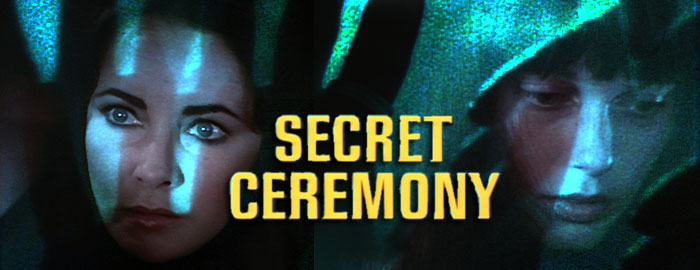
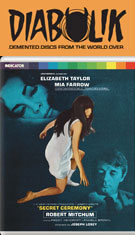

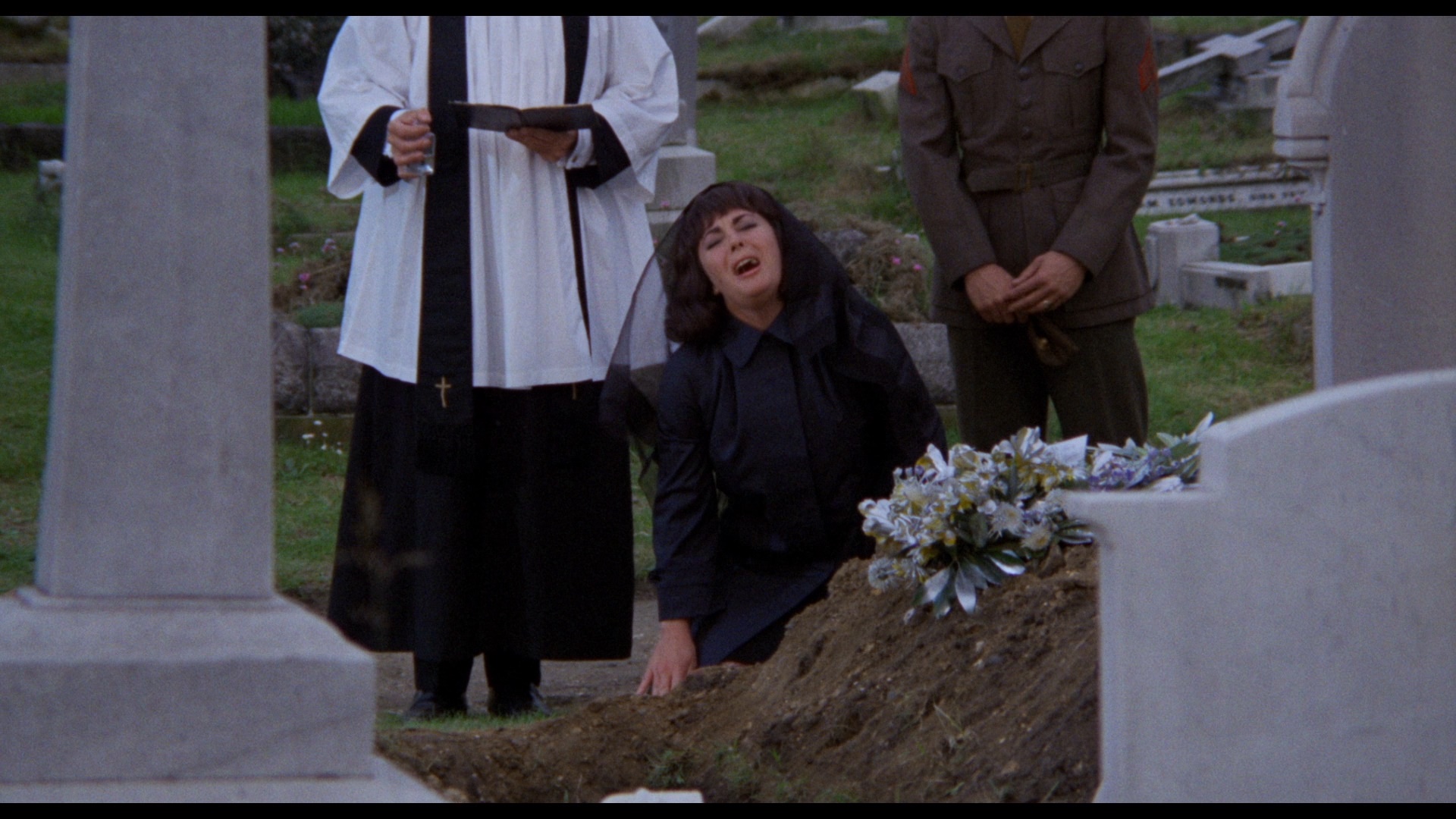 the Oscar-winning success of her
the Oscar-winning success of her 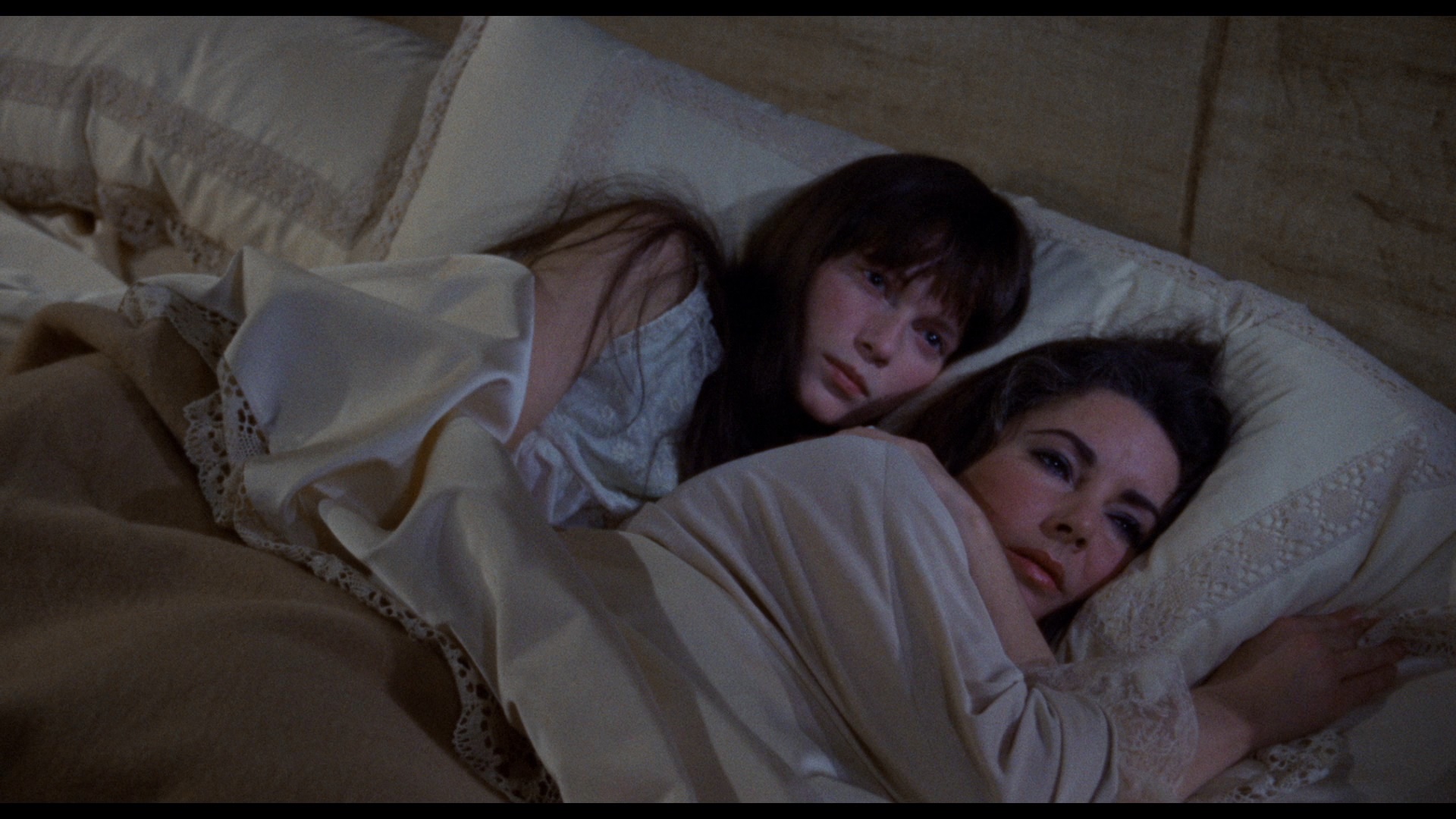 combative role in Mike Nichol's Who's Afraid of Virginia Woolf?, Elizabeth Taylor seemed to take the career turn as encouragement to make an increasingly baroque string of wild psychodramas that would stymie critics and lead to her waning status as a box office name. Among these often troubling but fascinating chamber nightmares were Reflections in a Golden Eye, X, Y and Zee, Ash Wednesday, and the outrageous Tennessee Williams adaptation, Boom!, handled by expatriate American director Joseph Losey, which opened in the Spring of 1969. Taylor and Losey decided to team up again for another stylized drama released just a few months later, Secret Ceremony, which ended up getting a lot of promotional mileage as Mia Farrow's immediate follow-up to one of the year's most indelible classics, Rosemary's Baby. A perverse potboiler dealing with psychological trauma, unhealthy role playing, and implications of incest, lesbianism and molestation, it's a difficult but rewarding film from Losey's defiant anti-commercial period that soon resulted in the even more abstract Figures in a Landscape.
combative role in Mike Nichol's Who's Afraid of Virginia Woolf?, Elizabeth Taylor seemed to take the career turn as encouragement to make an increasingly baroque string of wild psychodramas that would stymie critics and lead to her waning status as a box office name. Among these often troubling but fascinating chamber nightmares were Reflections in a Golden Eye, X, Y and Zee, Ash Wednesday, and the outrageous Tennessee Williams adaptation, Boom!, handled by expatriate American director Joseph Losey, which opened in the Spring of 1969. Taylor and Losey decided to team up again for another stylized drama released just a few months later, Secret Ceremony, which ended up getting a lot of promotional mileage as Mia Farrow's immediate follow-up to one of the year's most indelible classics, Rosemary's Baby. A perverse potboiler dealing with psychological trauma, unhealthy role playing, and implications of incest, lesbianism and molestation, it's a difficult but rewarding film from Losey's defiant anti-commercial period that soon resulted in the even more abstract Figures in a Landscape.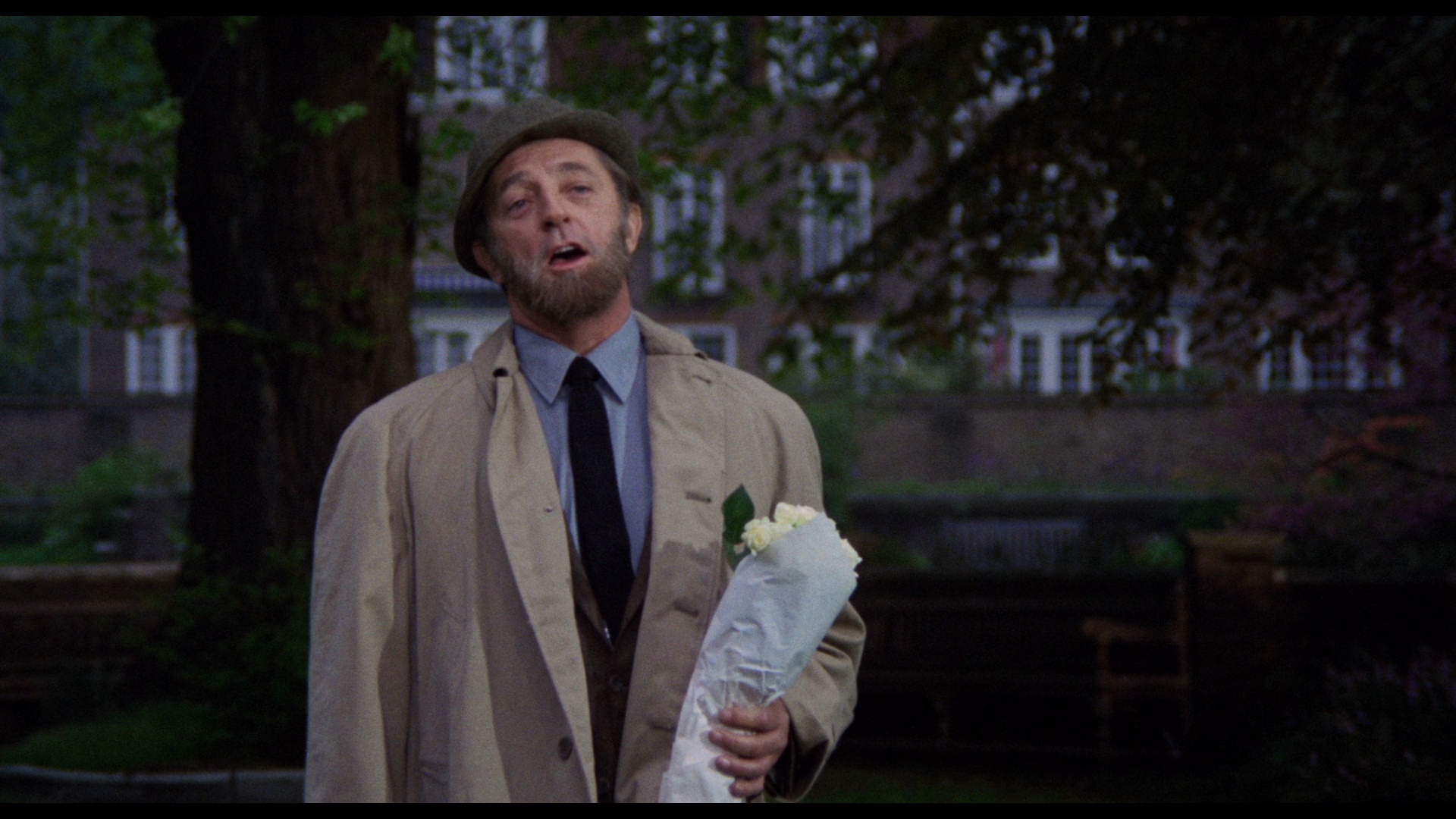
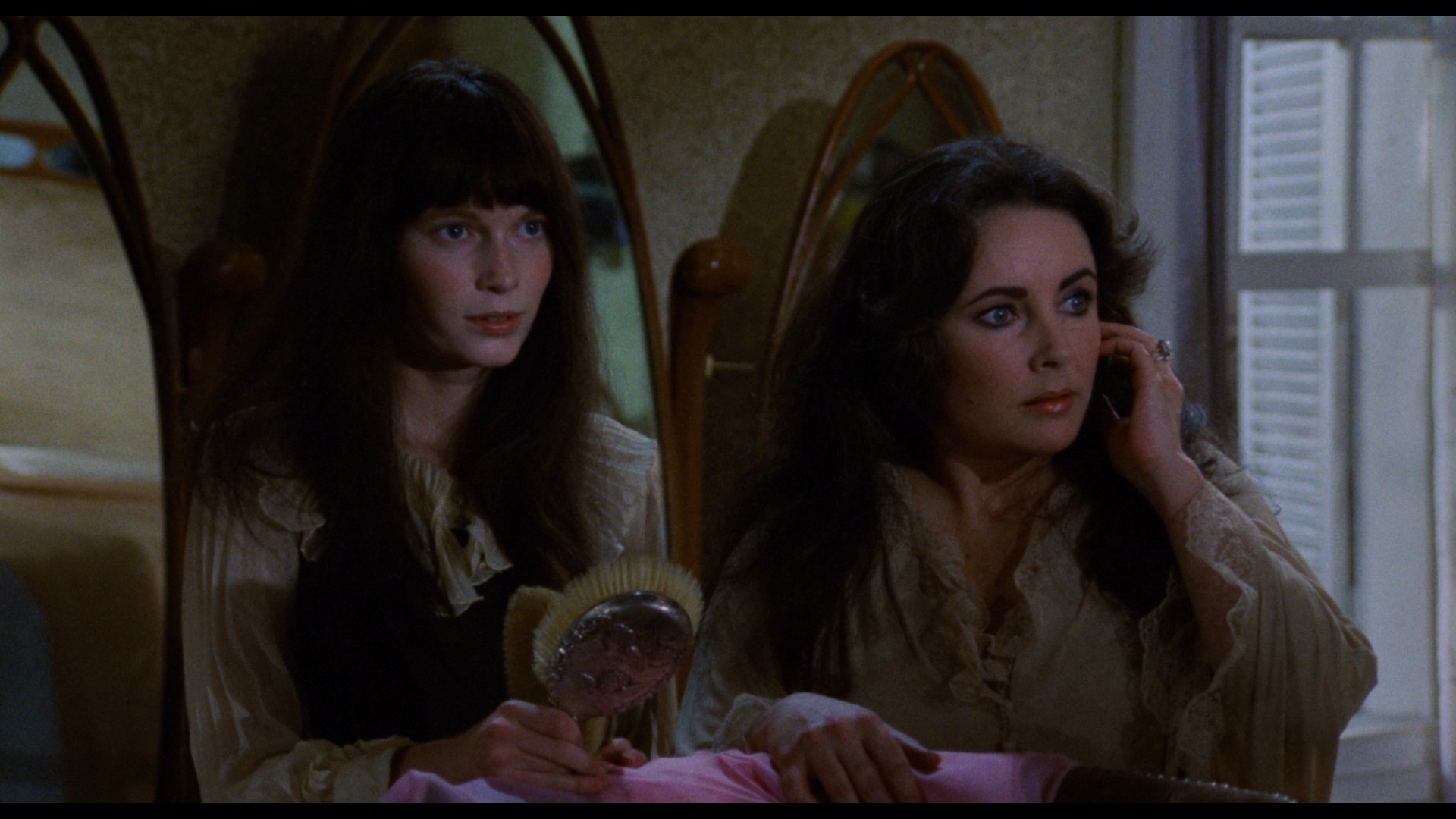 Given a significant theatrical push by Universal, Secret Ceremony wasn't the major hit expected from the cast but became an afternoon TV mainstay for years, on rare occurrences in a doctored version prepared for broadcast (but more on that below). The expansive scope lensing of Boom! gives way here to a much more claustrophobic, classical visual style that suits the equally death-haunted material, with Taylor and Farrow delivering fragile, nicely calibrated performances that hint at far more than they actually show. On the other hand, Mitchum gets to barnstorm like crazy with some of the nuttiest dialogue of his career, delivering a flamboyant and loathsome character whose every syllable seems to drip with sickness. Everyone involved gives the material more class than it might have enjoyed in lesser hands, particularly thanks to ace composer Richard Rodney Bennett and cinematographer Gerry Fisher (who would shoot Farrow again soon after in See No Evil). Incredibly, Taylor would go even weirder or more over the top over the course of the next few years, culminating in an even more demented study in sex and death with The Driver's Seat in 1974.
Given a significant theatrical push by Universal, Secret Ceremony wasn't the major hit expected from the cast but became an afternoon TV mainstay for years, on rare occurrences in a doctored version prepared for broadcast (but more on that below). The expansive scope lensing of Boom! gives way here to a much more claustrophobic, classical visual style that suits the equally death-haunted material, with Taylor and Farrow delivering fragile, nicely calibrated performances that hint at far more than they actually show. On the other hand, Mitchum gets to barnstorm like crazy with some of the nuttiest dialogue of his career, delivering a flamboyant and loathsome character whose every syllable seems to drip with sickness. Everyone involved gives the material more class than it might have enjoyed in lesser hands, particularly thanks to ace composer Richard Rodney Bennett and cinematographer Gerry Fisher (who would shoot Farrow again soon after in See No Evil). Incredibly, Taylor would go even weirder or more over the top over the course of the next few years, culminating in an even more demented study in sex and death with The Driver's Seat in 1974. 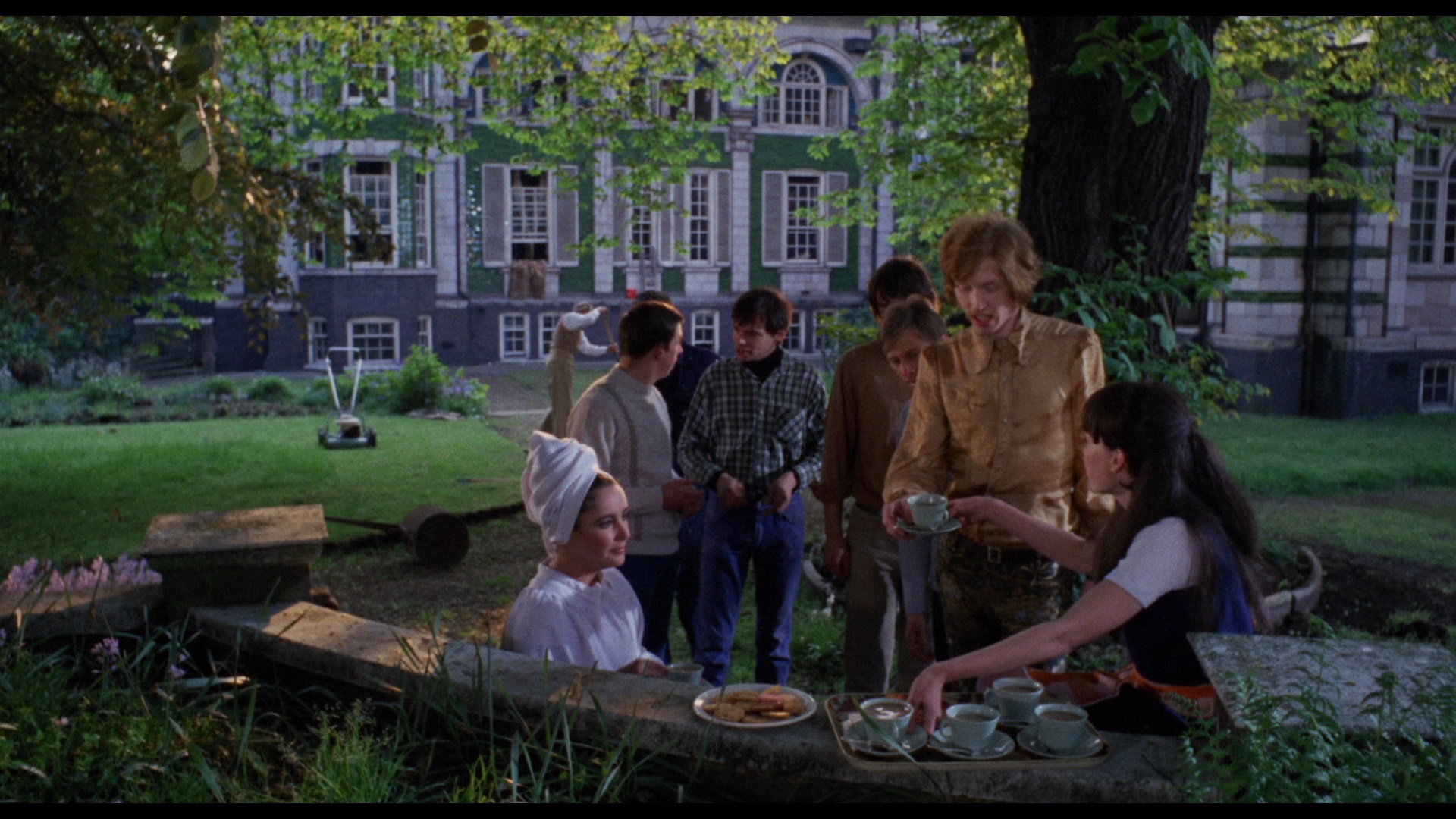 "Loseyologist" Dean Brandum and Alexandra Heller-Nicholas, which starts off on a bumpy note with forgotten names and lots of paper shuffling but soon gets into a nice, cheerful groove as they hone in on Losey's cinematic approach (including his relevant focus on rituals and family dynamics), the frequent
"Loseyologist" Dean Brandum and Alexandra Heller-Nicholas, which starts off on a bumpy note with forgotten names and lots of paper shuffling but soon gets into a nice, cheerful groove as they hone in on Losey's cinematic approach (including his relevant focus on rituals and family dynamics), the frequent 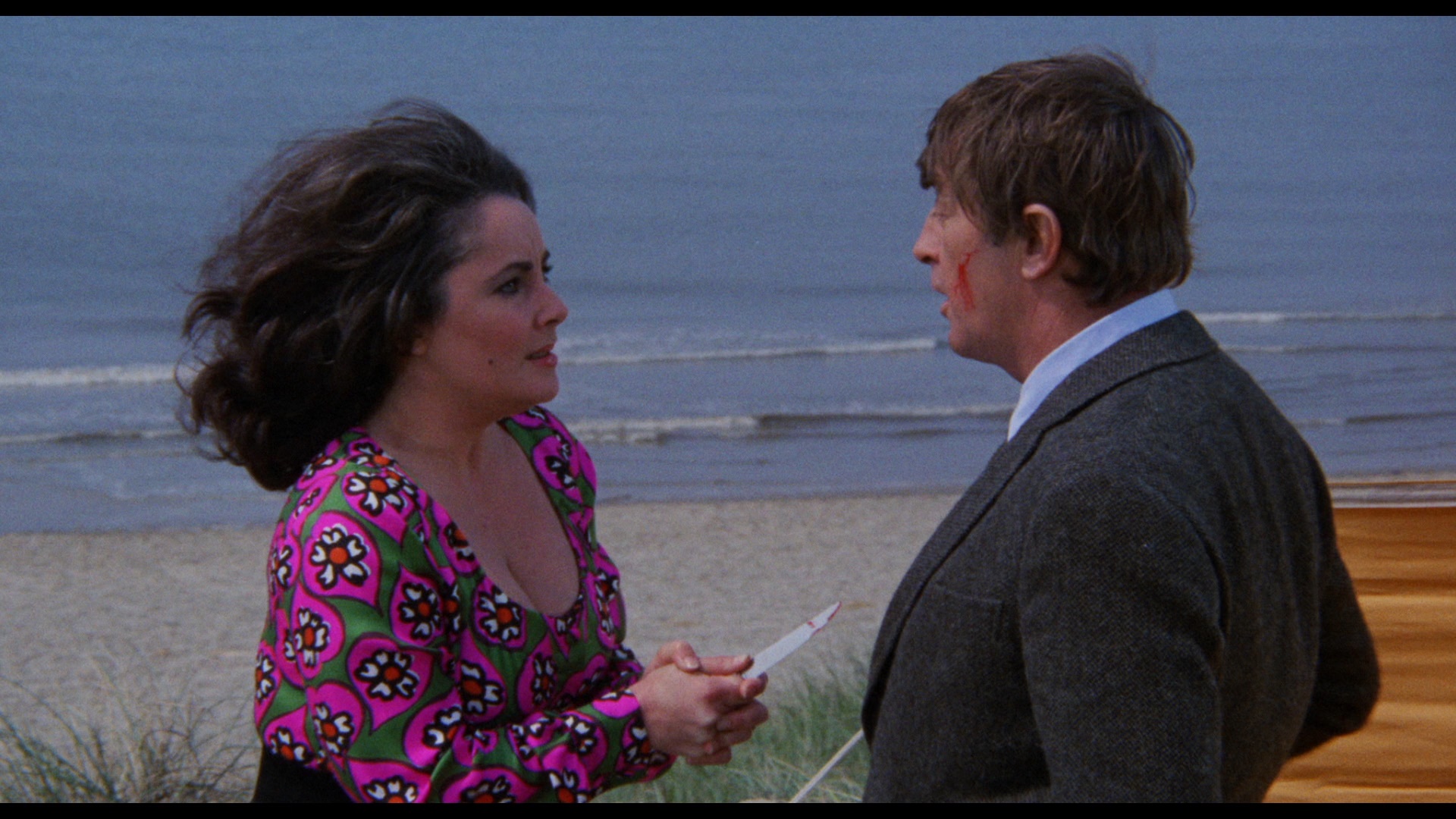 critical misconceptions about the film, the tropes of British cinema around that time, and the career backgrounds of everyone involved including a small but surprising appearance by future Oscar winner Peggy Ashcroft as one of Farrow's aunts. A relevant segment from a 1969 episode of the B&W French TV series Cinéma critique (15m3s) features critic Michel Mourlet covering the director's career up to that point (including his exodus from America) along with selections from the film, with Losey himself turning up near the end on set to offer effusive praise for Taylor's performance. Then The Beholder’s Share (24m14s) features Losey's son, Gavrik Losey, sharing memories of his father's bucking against the religious snobbery of the American Midwest, his political leanings that landed him in hot water, and the complexity of the relationships and themes in this film. The infamous 1971 TV version is represented here with a reel of its unique footage (17m36s) with Robert Douglas and Michael Strong providing a long framing device preparing for the upcoming trial taking place in the aftermath of the film's events, presented here in a new scan and looking great. You also get a look at some alternate footage presented with toned-down dialogue, which is fascinating to compare. The theatrical trailer is also included, in either an open matte SD presentation or a Trailers from Hell option hosted by Larry Karaszewski. The disc closes out with a massive 139-image gallery of promotional and publicity material, while the usual impressive insert booklet comes with a new Neil Sinyard essay, a newspaper report from the set, archival comments from Losey, notes on the source novella b y Marco Denevi, and sample critical reviews.
critical misconceptions about the film, the tropes of British cinema around that time, and the career backgrounds of everyone involved including a small but surprising appearance by future Oscar winner Peggy Ashcroft as one of Farrow's aunts. A relevant segment from a 1969 episode of the B&W French TV series Cinéma critique (15m3s) features critic Michel Mourlet covering the director's career up to that point (including his exodus from America) along with selections from the film, with Losey himself turning up near the end on set to offer effusive praise for Taylor's performance. Then The Beholder’s Share (24m14s) features Losey's son, Gavrik Losey, sharing memories of his father's bucking against the religious snobbery of the American Midwest, his political leanings that landed him in hot water, and the complexity of the relationships and themes in this film. The infamous 1971 TV version is represented here with a reel of its unique footage (17m36s) with Robert Douglas and Michael Strong providing a long framing device preparing for the upcoming trial taking place in the aftermath of the film's events, presented here in a new scan and looking great. You also get a look at some alternate footage presented with toned-down dialogue, which is fascinating to compare. The theatrical trailer is also included, in either an open matte SD presentation or a Trailers from Hell option hosted by Larry Karaszewski. The disc closes out with a massive 139-image gallery of promotional and publicity material, while the usual impressive insert booklet comes with a new Neil Sinyard essay, a newspaper report from the set, archival comments from Losey, notes on the source novella b y Marco Denevi, and sample critical reviews. ![]()